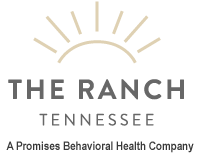In recent years, bipolar diagnoses in young people have become more common. While the National Institute of Mental Health has been hesitant to attribute the rise to any one factor, they point out that the surge can be interpreted in several ways. Specifically, NIMH states that the increase in diagnoses may not indicate a rise in prevalence or incidence—epidemiological terms that refer to the number of people who have bipolar disorder now and the number of new cases that occur annually.
Regardless of the cause of the rise, young people who are diagnosed can find help in a bipolar disorder treatment center, where they can learn healthy skills to manage their symptoms.
What Is Bipolar Disorder?
Bipolar disorder is a mood disorder that involves cycling between hypomanic episodes (characterized by abnormally elevated mood and energy levels) and depressive episodes (characterized by intense sadness, anxiety, and apathy).
It is crucial to differentiate bipolar disorder from major depressive disorder, as a bipolar patient will commonly experience depressive episodes more often than hypomanic episodes, which may result in an incorrect diagnosis. During a hypomanic episode, people with bipolar disorder may engage in impulsive or dangerous behaviors that can become self-destructive in several ways—financially, socially, or physically.
Increased Awareness of Mental Health Problems
It may be possible that the rise in new bipolar diagnoses in young people may result from better mental health education compared to previous data. People who can recognize their behavior and mental states as abnormal for themselves can seek out treatment and describe their symptoms more accurately.
Outreach organizations, such as the National Alliance on Mental Illness, focus on providing advocacy and awareness to the community. This advocacy also makes it more socially acceptable for many people struggling with mood disorders and other mental health disorders to seek mental health services.
Young people and adolescents who identify with underrepresented racial and social groups may also utilize mental health services more often, a study published in the Journal of Adolescent Health suggests. As such, there may not be a substantial rise in new bipolar disorder cases. It is possible that more cases are being diagnosed because of better resources being available to at-risk populations.
Epidemiology: Prevalence or Incidence?
When interpreting data on new diagnoses, it is essential to distinguish between prevalence and incidence. The prevalence of bipolar disorder refers to the number of current cases of bipolar disorder. The incidence refers to the number of new cases that occur.
This data can be used to measure the continuing trends of a condition as it affects a population. It can also measure morbidity (co-occurring diagnoses) and mortality (the number of deaths resulting from a diagnosis).
Bipolar disorder has seen rising incidence, which shows that more patients are being diagnosed with new cases of bipolar disorder. It also sees rising prevalence, which means that the overall mortality rate of bipolar disorder is relatively low with treatment.
The Possible Reasons for Misdiagnosis
While undoubtedly many of these cases are legitimate, a column by John M. Grohol, Psy D., points out that the epidemiological data showing the rise in diagnoses comes from healthcare surveys given by the National Center for Health Statistics over a weeklong period. As such, all diagnoses counted in the original study were given by family doctors and general practitioners operating out of private health practices and clinics, not by mental health professionals.
Dr. Grohol suggests that because these doctors were operating out of their specialty. In this specific study, not all diagnoses may have been accurate. The average mental health practitioner spends more time engaged in skillful questioning and examination to obtain the most accurate diagnosis possible. On the other hand, general practitioners may offer the closest diagnosis they can recognize because it is easier for the practitioner and the patient than obtaining a referral to the right professional.
Any discrepancy in these diagnoses may not necessarily be the product of ignorance on the doctor’s part but rather a shorter path to treatment, even if the treatment may not be exactly right. Unfortunately, general treatment does not provide the right results for every patient. It may take several different psychoactive drug regimens or combinations of medications with other intensive therapies to provide adequate relief. Mental health professionals may have better expertise regarding the highly individual process of treating bipolar disorder.
Bipolar Disorder Treatment for Young People
While there is no cure for bipolar disorder, there are treatments that can help lessen the symptoms and improve functioning. Treatment usually involves a combination of medication and psychotherapy, with some patients also engaging in complementary therapies, such as yoga or mindfulness meditation.
It is crucial to seek out treatment as soon as possible after diagnosis to begin managing the symptoms. For young people, this can be a challenge. The National Institute of Mental Health reports that only about half of teens with bipolar disorder receive treatment, even though it is available.
Mental Health Treatment at Recovery Ranch TN
At Recovery Ranch TN, we provide comprehensive treatment for bipolar disorder and other mental health conditions. We offer a variety of therapies and treatments that are designed to meet the unique needs of each patient. We understand that no two people are alike and tailor our treatment plans accordingly.
If you or someone you love is struggling with bipolar disorder, we urge you to reach out for help by contacting us online or calling us at 1.844.876.7680. We are here to support you on your journey to wellness.

